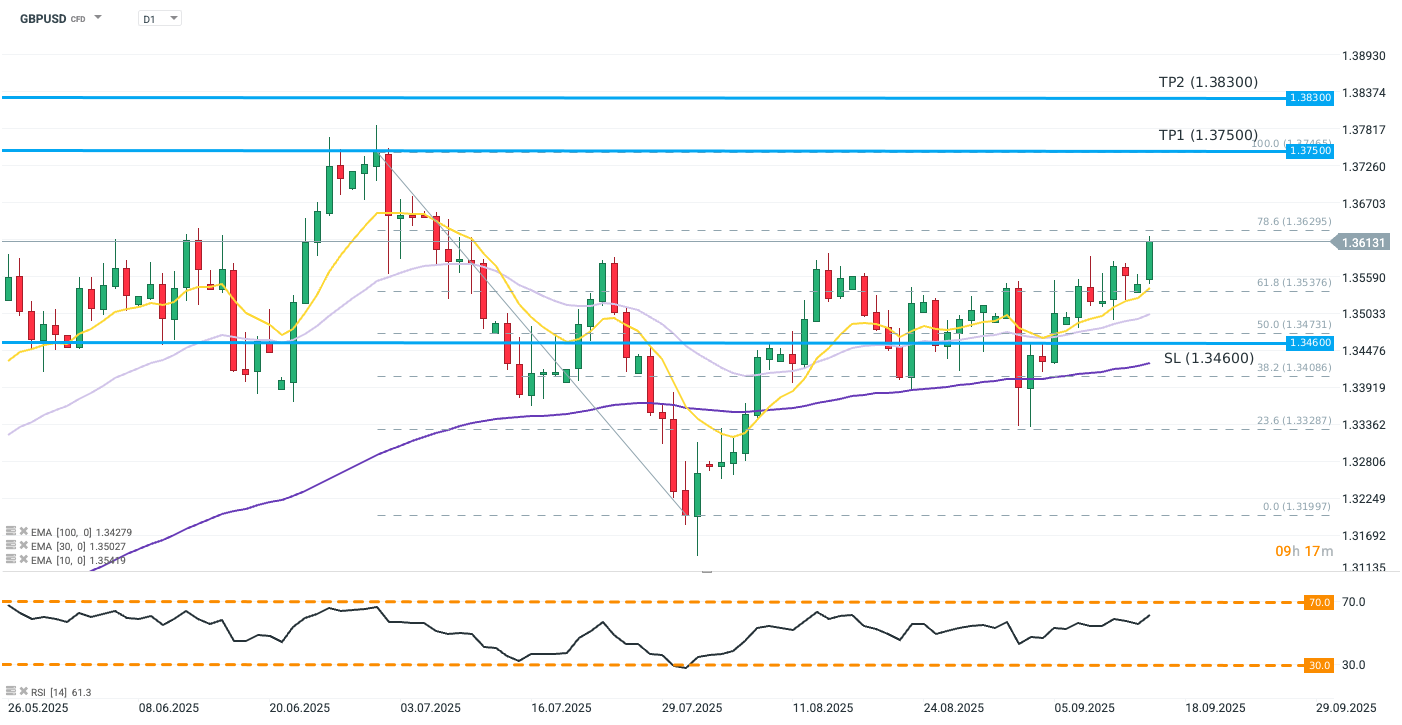Trade of The Day – GBP/USD
Facts:
- The GBPUSD rate broke above the 10-day exponential moving average (EMA10; yellow) today.
- The swaps market is currently pricing in two full rate cuts in the US and about 78.6% probability of a third by the end of 2025, while the first rate cut in the UK is priced only for April 2026 (source: Bloomberg).
- Former MPC members suggest reducing bond sales (source: The Guardian).
Recommendation:
- Long position (BUY) on GBPUSD at market price
- Target price (Take Profit; TP): 1.37500 (TP1), 1.38300 (TP2)
- Stop Loss (SL): 1.34600

Source: xStation5
Opinion
GBPUSD is consistently recovering after the slump on September 2, which followed the sell-off in UK government bonds amid fears over the Labour government’s planned November budget. For Chancellor Reeves, the non-negotiable priority is to reduce the debt-to-GDP ratio. While fiscal discipline should strengthen confidence in GBP, the ways of raising additional revenue (e.g., new corporate taxes) may discourage investors from keeping capital in the UK market.
This risk, however, is currently secondary in light of upcoming central bank decisions on both sides of the Atlantic. The market is now convinced of a 25 bp Fed rate cut on Wednesday, with some institutions (e.g., Société Générale) even pricing in a “jumbo cut” of 50 bp. Meanwhile, the Bank of England is constrained by inflation, which has stayed above 3% since early 2025 (except February and March: 2.8% and 2.6%). According to Bloomberg consensus, inflation was expected to remain at 3.8% in August.
In addition to monetary support, confidence in the pound could also improve with potential reduction of quantitative tightening, as suggested by former MPC members. According to Michael Saunders and Sushil Wadhwani, the BoE should cut back gilt sales, citing weak demand and market volatility. A more passive approach to bond sales could ease upward pressure on yields, thereby relieving the UK budget.
Methodology
The recommendation is based on technical analysis of the GBPUSD chart and fundamental analysis of the UK and US economies (fiscal and monetary policy). Direction of the recommendation was determined using moving averages (shorter above longer; upward trend) and the expected market reaction to monetary policy in the UK and US.
Take Profit and Stop Loss levels were set using Fibonacci retracement (TP1, SL) and Price Action methodology (TP2). Stop Loss was placed slightly below the 50% Fibonacci retracement, which, together with EMA30, should act as key support if the price returns toward EMA100. The main risk factor remains volatility in the pair driven by upcoming UK macroeconomic data releases (labour market on Tuesday, inflation on Wednesday).




